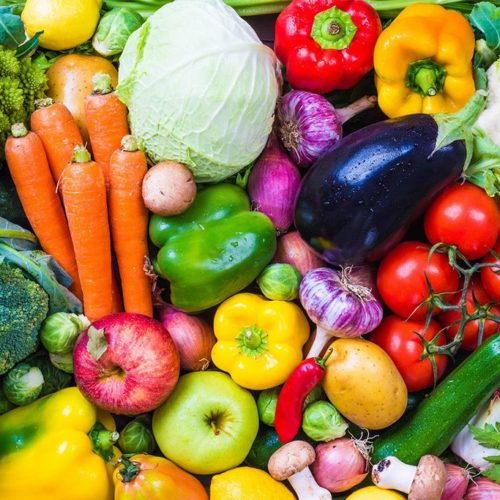-
Out of stock

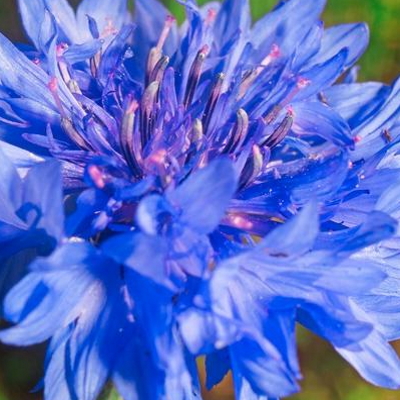 Bachelor's Button or Cornflower-It's hard to beat the colours of the bachelor's button. It got the name "cornflower" because it grew as a weed in cornfields, but you may welcome it in your garden. It does spread, but it is easy to pull out any extras. This tall 90 cm mix comes in the colours of purple, blue, pink and white provide papery blossoms that bring summer colour to the garden. They're attractive planted in a group in a corner or open spot in the garden. Deadhead regularly to prolong blooming. Plant periodically over spring to prolong bloom times.
Bachelor's Button or Cornflower-It's hard to beat the colours of the bachelor's button. It got the name "cornflower" because it grew as a weed in cornfields, but you may welcome it in your garden. It does spread, but it is easy to pull out any extras. This tall 90 cm mix comes in the colours of purple, blue, pink and white provide papery blossoms that bring summer colour to the garden. They're attractive planted in a group in a corner or open spot in the garden. Deadhead regularly to prolong blooming. Plant periodically over spring to prolong bloom times. -
Out of stock
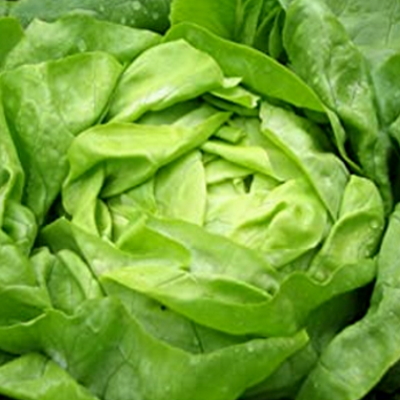 Buttercrunch is a real winner and always a favorite in our organic gardens. This is a butterhead type of lettuce with crisp, thick well-formed medium to dark green outer leaves which hides the buttery yellow-white heart. Buttercrunch has good resistance to bolting. For ultimate flavour and nutrition eat directly after picking. We found that all lettuce, especially our buttercrunch grows in moist rich organic compost. Spring lettuce is grown in sunny locations, while summer crops prefer light shade. Since lettuce is a cool-weather crop, sow the seed as soon as the soil can be worked in the spring then every two weeks thereafter to ensure a continuous supply. Sow seed about 3 mm deep. Head lettuce such as Buttercrunch should be thinned to 30 cm apart to provide ample nutrients and room for growth. An even supply of moisture during the entire growth period is imperative for success. Harvest head lettuce by cutting the head off at the base just below the lower leaves.
Buttercrunch is a real winner and always a favorite in our organic gardens. This is a butterhead type of lettuce with crisp, thick well-formed medium to dark green outer leaves which hides the buttery yellow-white heart. Buttercrunch has good resistance to bolting. For ultimate flavour and nutrition eat directly after picking. We found that all lettuce, especially our buttercrunch grows in moist rich organic compost. Spring lettuce is grown in sunny locations, while summer crops prefer light shade. Since lettuce is a cool-weather crop, sow the seed as soon as the soil can be worked in the spring then every two weeks thereafter to ensure a continuous supply. Sow seed about 3 mm deep. Head lettuce such as Buttercrunch should be thinned to 30 cm apart to provide ample nutrients and room for growth. An even supply of moisture during the entire growth period is imperative for success. Harvest head lettuce by cutting the head off at the base just below the lower leaves. -
Out of stock
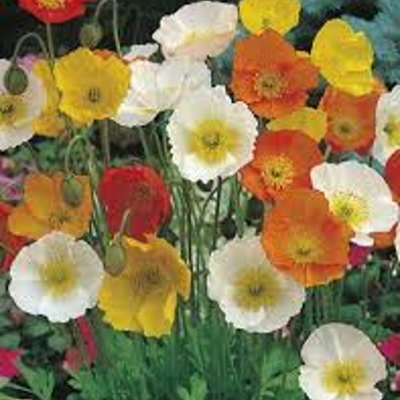 Papaver nudicaule. The Iceland Poppy is a hardy short-lived perennial. It self sows easily so will last for years to come. The cup-shaped blooms have a texture like crepe paper and appear in a range of subdued pastel colours; apricot, gold, tangerine, and white. Sow Iceland Poppy seeds in early spring or late fall where they are to grow permanently. The flower stalks grow to around 30cm tall and are among the longest-lasting poppies as cut flowers. Use a candlestick to seal the cut stem to prolong them as cut flowers. They are highly attractive to bees. Plant in late fall or early spring. Poppy seeds need to be cold stratified to germinate. Poppies only need soil that is ordinary and moist, but well-drained. The seeds should not be planted deeply; they just need to be compressed into the soil, as they need light to germinate. The best method for planting is to mix one part seed with 5 parts sand and scatter over the prepared growing area.
Papaver nudicaule. The Iceland Poppy is a hardy short-lived perennial. It self sows easily so will last for years to come. The cup-shaped blooms have a texture like crepe paper and appear in a range of subdued pastel colours; apricot, gold, tangerine, and white. Sow Iceland Poppy seeds in early spring or late fall where they are to grow permanently. The flower stalks grow to around 30cm tall and are among the longest-lasting poppies as cut flowers. Use a candlestick to seal the cut stem to prolong them as cut flowers. They are highly attractive to bees. Plant in late fall or early spring. Poppy seeds need to be cold stratified to germinate. Poppies only need soil that is ordinary and moist, but well-drained. The seeds should not be planted deeply; they just need to be compressed into the soil, as they need light to germinate. The best method for planting is to mix one part seed with 5 parts sand and scatter over the prepared growing area. -
Out of stock
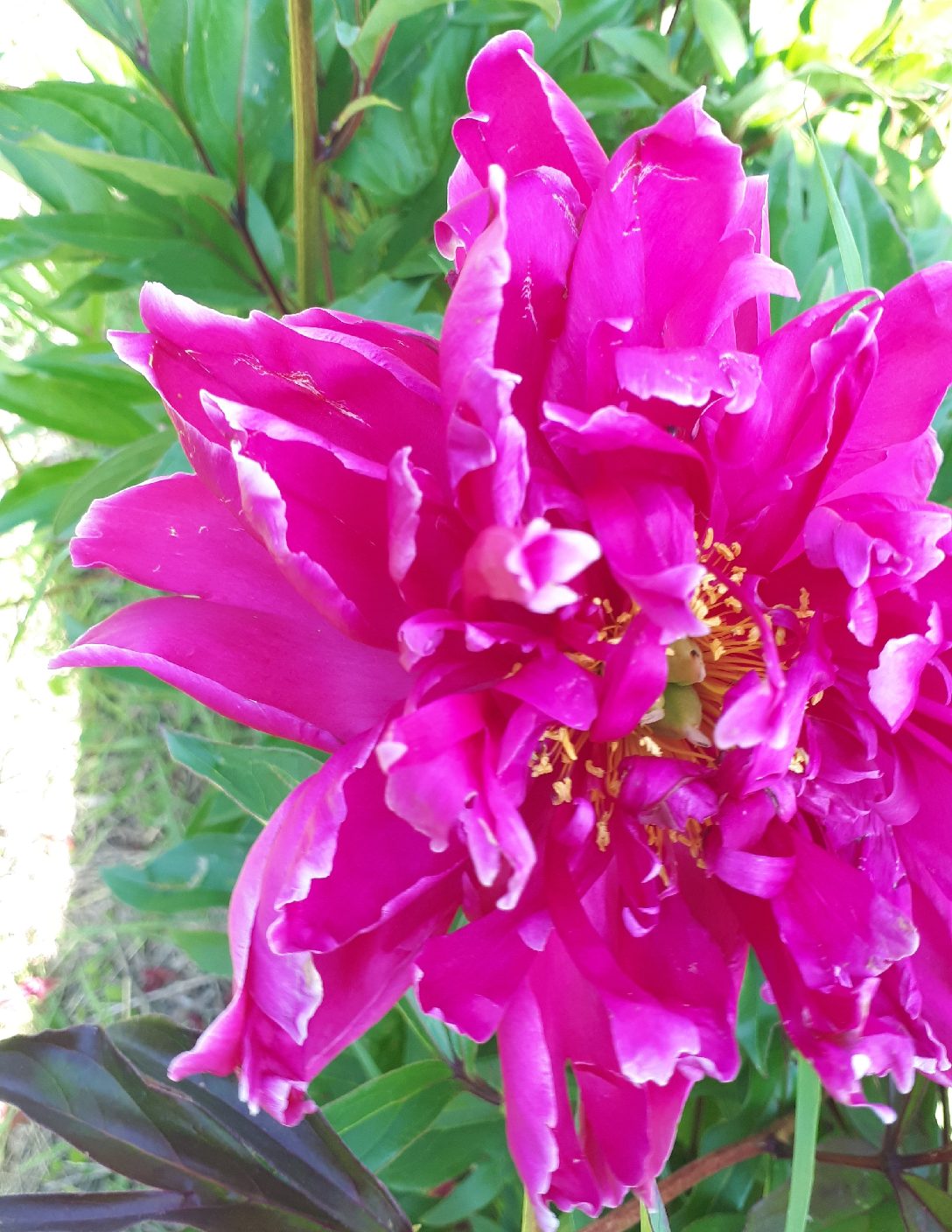
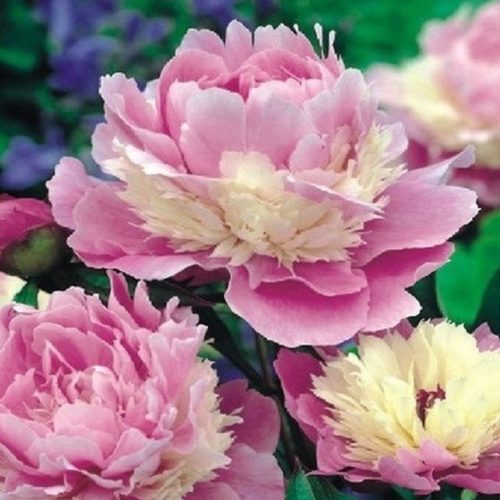 Mixed heritage variety peony plants. $10.00 each root or 5 roots for $35.00
Mixed heritage variety peony plants. $10.00 each root or 5 roots for $35.00 -
Out of stock
 Enjoy a baby's breath that is actually pink! Plant in your sunny perennial garden and watch as large panicles of true light pink flowers splash your garden from early through midsummer. This upright, well-branched, bush type grows up to 3' tall. Use as a filler plant to cover dying bulb foliage or for perennials that go dormant in the summer months. The pretty pink flowers also are perfect in floral arrangements! Makes an excellent dried flower.
Enjoy a baby's breath that is actually pink! Plant in your sunny perennial garden and watch as large panicles of true light pink flowers splash your garden from early through midsummer. This upright, well-branched, bush type grows up to 3' tall. Use as a filler plant to cover dying bulb foliage or for perennials that go dormant in the summer months. The pretty pink flowers also are perfect in floral arrangements! Makes an excellent dried flower. -
Out of stock
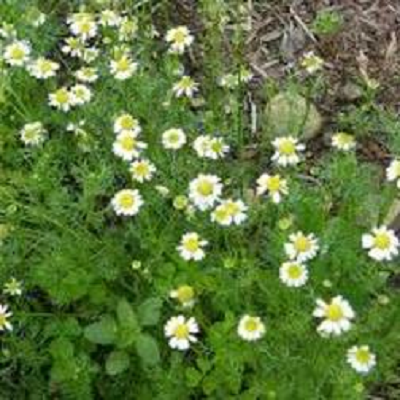
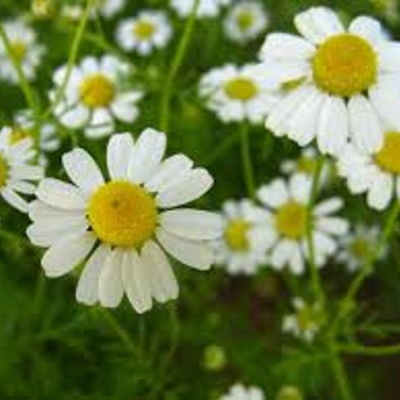 65 days. Matricaria recutita. Annual. The plant is used fresh and dried to make great tea, perfumes, and hair rinse. This variety produces high yields of small white daisy-like flowers. Try fresh chamomile steeped and chilled for a refreshing summer beverage. Package contains: 100 Seeds
65 days. Matricaria recutita. Annual. The plant is used fresh and dried to make great tea, perfumes, and hair rinse. This variety produces high yields of small white daisy-like flowers. Try fresh chamomile steeped and chilled for a refreshing summer beverage. Package contains: 100 Seeds -
Out of stock
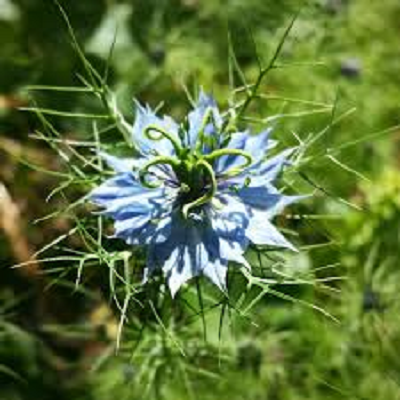
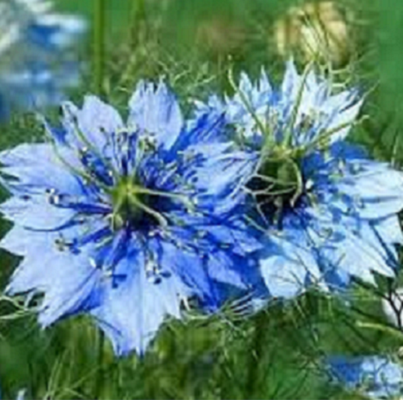 Nigella damascena. Persian Jewels Nigella seeds are also known as Love-in-a-Mist. Its delicate appearance belies its hardy, dependable nature. Pale as a baby flower, Persian Jewel matures to intense shades of violet, blue, white, and pastels in between. Each flower emerges from a tangle of lacy foliage. After blooming, curious-looking fruits ripen, dry, and eventually release seeds for the next season. These distinctive seed heads can be dried for flower arrangements. Everlasting flowers are grown especially for its spiky decorative seed pods. Germinates 10–14 days at 60°. Grow on at 60–65°. Set transplants 6–9" apart. For continuous bloom, direct seed weekly until June. Nigella grows 20–50cm (8–20") tall.
Nigella damascena. Persian Jewels Nigella seeds are also known as Love-in-a-Mist. Its delicate appearance belies its hardy, dependable nature. Pale as a baby flower, Persian Jewel matures to intense shades of violet, blue, white, and pastels in between. Each flower emerges from a tangle of lacy foliage. After blooming, curious-looking fruits ripen, dry, and eventually release seeds for the next season. These distinctive seed heads can be dried for flower arrangements. Everlasting flowers are grown especially for its spiky decorative seed pods. Germinates 10–14 days at 60°. Grow on at 60–65°. Set transplants 6–9" apart. For continuous bloom, direct seed weekly until June. Nigella grows 20–50cm (8–20") tall. -
Out of stock
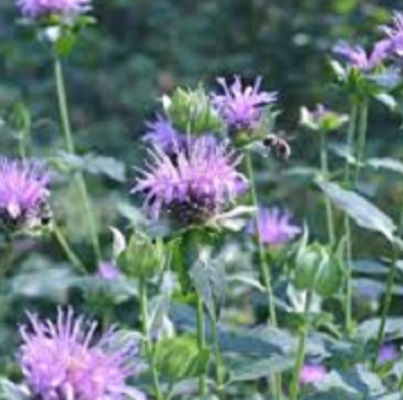 A bee magnet, softly aromatic leaves, and colourful flower heads are just a few lovely characteristics of Bee Balm (Monarda). Guaranteed to create a great impact when planted in masses with its starry explosions of colour burst from mid-summer through until the last frost. Known as bergamot. Leaves can be used in the kitchen before flowers appear.
A bee magnet, softly aromatic leaves, and colourful flower heads are just a few lovely characteristics of Bee Balm (Monarda). Guaranteed to create a great impact when planted in masses with its starry explosions of colour burst from mid-summer through until the last frost. Known as bergamot. Leaves can be used in the kitchen before flowers appear. -
-
Out of stock
 The earliest and best white spine cucumber ever offered, Early Fortune Organic is a fresh and clean tasting slicer is descended from seeds first bred in Michigan in 1906. The fruits grow 18-21cm long, and 5cm in diameter. The plants are richly productive for the home or market gardener. The plants are productive in the greenhouse or polytunnel, but equally so growing in raised beds or the open field. Give the fruits a quick rub with a tea towel or similar cloth to remove spines at harvest time.
The earliest and best white spine cucumber ever offered, Early Fortune Organic is a fresh and clean tasting slicer is descended from seeds first bred in Michigan in 1906. The fruits grow 18-21cm long, and 5cm in diameter. The plants are richly productive for the home or market gardener. The plants are productive in the greenhouse or polytunnel, but equally so growing in raised beds or the open field. Give the fruits a quick rub with a tea towel or similar cloth to remove spines at harvest time. -
Out of stock
 Strawberry Spinach is one of the best-kept secrets of the herb world. A herb that dates back to the 1600s in North America and northern Europe, this annual sets tiny, deliciously tender leaves that can be cooked like spinach or used fresh in salads. It also sets small red fruits in late summer and fall that taste a bit like mulberries which are lovely fresh or canned. A delectable and useful plant, you'll want it front and center of the herb garden! Strawberry Spinach sets new leaves all season long. The foliage is slender, deeply lobed, and appears in rosettes along long, slender stems. Quite small, they resemble small raspberries with a bright strawberry-red colour! The berries arise at the base of each stem and having berries on spinach plants is uniquely interesting! Direct sow Strawberry Spinach in full sun and rich, fertile soil. It reaches about 45 cm high and 30 cm wide. Easy and trouble-free.
Strawberry Spinach is one of the best-kept secrets of the herb world. A herb that dates back to the 1600s in North America and northern Europe, this annual sets tiny, deliciously tender leaves that can be cooked like spinach or used fresh in salads. It also sets small red fruits in late summer and fall that taste a bit like mulberries which are lovely fresh or canned. A delectable and useful plant, you'll want it front and center of the herb garden! Strawberry Spinach sets new leaves all season long. The foliage is slender, deeply lobed, and appears in rosettes along long, slender stems. Quite small, they resemble small raspberries with a bright strawberry-red colour! The berries arise at the base of each stem and having berries on spinach plants is uniquely interesting! Direct sow Strawberry Spinach in full sun and rich, fertile soil. It reaches about 45 cm high and 30 cm wide. Easy and trouble-free. -
Out of stock
 This carrot’s beautiful red-purple exterior provides a striking contrast to its yellow-orange interior and light yellow core. A treat for the eye when sliced, its sweet, almost spicy, flavour makes this carrot a home gardener’s favorite. Considered the most refined purple carrot available. Danvers carrots were developed in the 1870s in Danvers, Massachusetts. It became a popular seed due to the root's deep orange color and rich flavor. This variety does better than many popular carrots because it forms nice roots even in heavy, shallow soils. Purple Dragon carrots are considered to be very hardy and tend to do best in cooler northern regions.
This carrot’s beautiful red-purple exterior provides a striking contrast to its yellow-orange interior and light yellow core. A treat for the eye when sliced, its sweet, almost spicy, flavour makes this carrot a home gardener’s favorite. Considered the most refined purple carrot available. Danvers carrots were developed in the 1870s in Danvers, Massachusetts. It became a popular seed due to the root's deep orange color and rich flavor. This variety does better than many popular carrots because it forms nice roots even in heavy, shallow soils. Purple Dragon carrots are considered to be very hardy and tend to do best in cooler northern regions.
